Node.js v22: Latest version on May 2024
Summer Nguyen | 07-29-2024
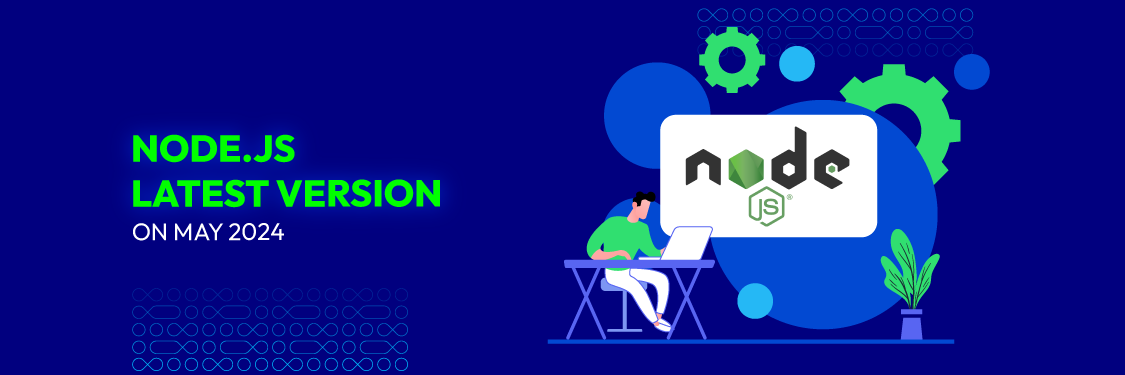
In May 2024, the Node.js community came out to celebrate the release of Node.js v22 which contains several advancements aimed at increasing its speed, protecting users’ data, and helping developers in their work. This blog post is about Node.js’s features and advantages of its transition to a new version, what’s new in v22, and how to check and update your Node.js version.
Node.js Versions Overview
For those unfamiliar, Node.js is a multipurpose open-source JavaScript runtime environment that has transformed the web development industry. It enables developers to create fast and large applications not confining the JS tool to work in browser environments only, but to serve the server side as well. There are plenty of opportunities: system architectures, DAQ applications, real-time systems and API, command-line tools, and hardware management.
If you are new to Node.js, we encourage you to check out our detailed guide: Nodejs Web Development: A Comprehensive Guide For Businesses.
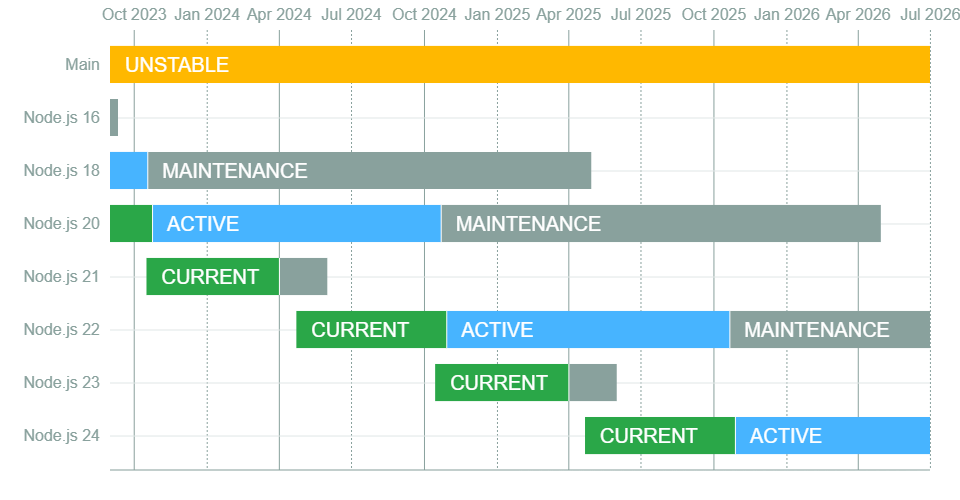
The history of Nodejs based on the highlights of the platform’s further development in the recent past unveils much information on how the platform is being developed and what new chances are opening for the developers. Every version brings major improvements concerning performance and security, making the development process easier for developers. This section outlines the main elements of Node.js releases 19, 20, and 21 that demonstrated the constant progress that led to the latest improvements in Node.js v22.
Node.js v18
- HTTP/2 Improvements: Improved handling and response to HTTP/2 requests that make web applications handle tasks more efficiently and in less time.
- Native Fetch API: Bundled experimental support of the latest Node.js release for the Fetch API to simplify HTTP requests. In Node.js environments, it can be used without the dependence on external libraries such as node-fetch or axios.
- V8 Engine Update: Integrated V8 10.7 with improved performance and new features in JavaScript.
- Experimental Web Streams API: Experimental support for Web Streams API was introduced, which is a proper method to work with streaming data asynchronously.
Node.js v20
- Experimental Permission Model: Allows restriction of access to specific resources during execution, enhancing security. This model is enabled via the –experimental-permission flag.
- Stable Test Runner: The test runner module became stable, facilitating the creation and execution of JavaScript tests without additional dependencies.
- Updated V8 Engine (v11.3): Includes new features like `String.prototype.isWellFormed, Resizable ArrayBuffer`, and WebAssembly Tail Call, enhancing performance and adding new JavaScript capabilities.
- Synchronous `import.meta.resolve()`: Simplifies module resolution, aligning with browser behavior and making module handling more efficient.
- Single Executable Applications (SEA): Supports creating single executable applications, allowing Node.js apps to be distributed as standalone binaries.
Node.js v21
- Stable Fetch API: The HTTP request option is now standard via the Fetch API. This integration decreases the clutter in the networks of Node. js environments, which makes it possible to get rid of such external libraries as `node-fetch` or `axios`.
- Enhanced WebSocket Support: Node.js v21 is equipped with native WebSocket to establish a real-time two-way connected client-server communication. This is particularly useful for developing chat applications, the live update system, and a variety of games.
- Improved ES Modules: The `–experimental-default-type` flag helps to define how files are processed, either in the CJs or ES modules format. This makes it possible to add new features to the ES module syntax with only minimal breaking changes.
- New Test Runner Features: The new testing utilities allow one to conveniently pass glob patterns and match all the files needed for testing. Also, with the help of the `–test-concurrency` option, the maximum number of test files that can be run simultaneously is determined, which increases the efficiency of testing.
- Updated llhttp Version 9.1.2: This update ensures strict mode is enabled by default enhancing code quality, and security. It also provides alternatives for the presenting of HTTP parsers that are less stringent and again this is a potentially dangerous option that should only be used with care.
- Performance Optimizations: API for working with streams has become lighter, and work with them has become 10% faster through the removal of unnecessary checks, as well as through changes in schedule callbacks. Improvements of the HTTP response processing decrease the overhead by chunking the responses more effectively.
- V8 Engine Upgrade to 11.8: Node.js v21 has an updated V8 engine added to it for better performance and other Advanced features of JavaScript like `Array.prototype.groupBy` and `ArrayBuffer.prototype.transfer`.
- NPM Upgrade to v10.2.0: The new version of NPM comes with features such as; A new `sbom` command that focuses on allowing an efficient way to handle the project dependencies as a Software Bill of Material
- Navigator API Implementation: V21 supports partial implementation of the Navigator API that gives access to the `navigator.hardwareConcurrency`. This enables the developers to get the number of logical processors that are more beneficial for optimizing the system’s performance.
- File System Enhancements: A flush option has also been integrated into the `writeFile` family of functions that automatically opens the file, and helps write any data to the disk immediately, thus minimizing the chance of reading outdated material when a new read is synchronized with the file system.
Node.js v22: Key Features and Improvements in The Latest Version
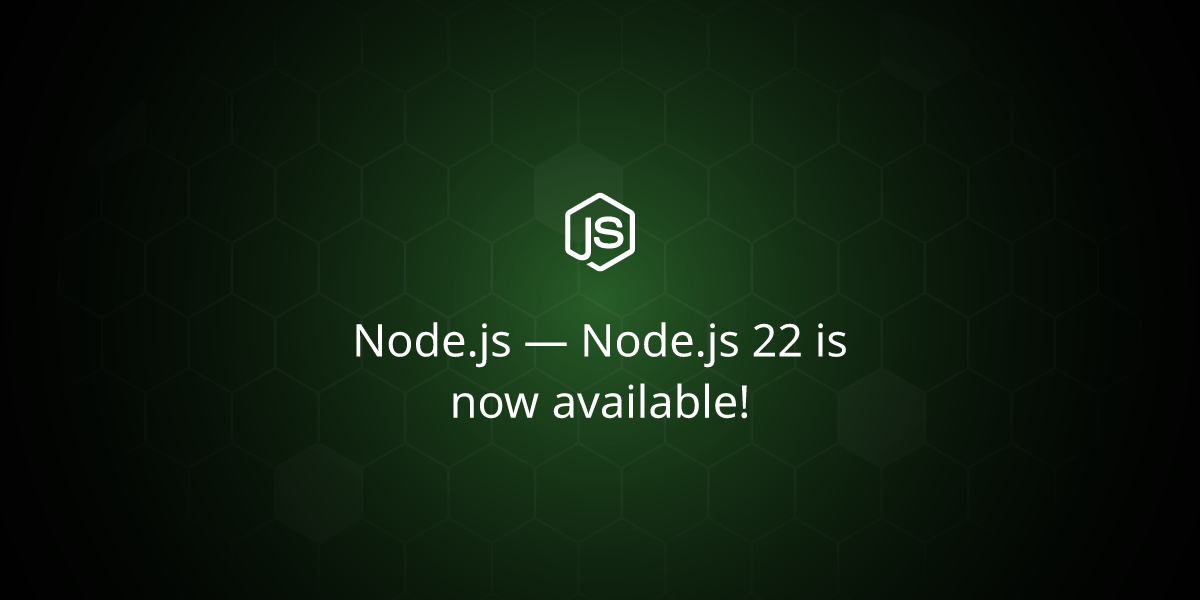
1. Enhanced Performance
For developers who live and breathe JavaScript, performance is everything. That’s why the latest Node.js v22 release is such an exciting update. It packs a powerful punch when it comes to boosting execution speeds and optimizing resource usage.
- V8 Engine Update:
- At its core, Node.js v22 integrates the brand new V8 12.4 JavaScript engine from Google. This puppy is turbo-charged with optimizations that significantly improve overall runtime performance.
- From executing your code faster to better managing memory usage, the V8 12.4 ensures your Node.js applications operate at peak efficiency. It supports the latest JavaScript language features while squeezing out every ounce of computing power.
- Maglev Compiler: The Maglev compiler streamlines startup times and reduces overhead for short-lived CLI scripts through advanced execution path analysis. Whether running server apps or command-line tools, the performance enhancements in Node.js v22 unlock new levels of speed.
Don’t know how to check your website’s performance? Check this out: How to Check Website Performance: Free Tools and Methods
2. Updated ECMAScript Support
- New JavaScript Features: Full support for the latest ECMAScript standards, including Array.fromAsync, Set methods, and iterator helpers. These features allow developers to write cleaner, more efficient code and leverage modern JavaScript functionalities.
- Optional Chaining and Nullish Coalescing: These features simplify code by providing more intuitive ways to handle optional properties and default values.
3. Improved Diagnostics
- Enhanced Debugging Tools: Node.js v22 includes improved tracing and debugging capabilities. These tools offer further levels of analysis enabling application developers to spot problems and correct them more easily.
- Diagnostic Reports: New and improved diagnostic reports consist of additional information regarding the mistakes and the state of the systems for faster identification of the problem and for maintenance.
4. Security Enhancements
- Stronger TLS Support: Updated TLS protocols enhance secure data transmission, ensuring robust protection against vulnerabilities.
- Improved OpenSSL Integration: Node.js v22 integrates the latest OpenSSL version, offering enhanced cryptographic operations and security features.
5. New APIs and Deprecations
- require() for Synchronous ESM: Node.js v22 supports synchronous ESM graphs under the –experimental-require-module flag, simplifying module loading in specific scenarios.
- Stream Default High Water Mark: The default high water mark for streams has increased from 16KiB to 64KiB, improving performance for data-intensive operations by reducing backpressure and enhancing throughput.
6. New WebSocket Client
- Built-in WebSocket Client: Starting in Node.js v22, WebSocket comes as a built-in client that is initially turned on. This feature helps make it easy when it comes to WebSocket communication since it does not require any extra libraries in the implementation of the same.
7. Other Notable Improvements
- Watch Mode: Now stable, Watch Mode (node –watch) automatically restarts the Node.js process when file changes are detected, streamlining development workflows and reducing downtime.
- glob and globSync Functions: Added to the node:fs module, these functions provide pattern matching for file paths, enhancing file system operations and simplifying code.
- Improved Performance of AbortSignal Creation: Enhancements in creating AbortSignal instances improve performance in scenarios involving fetch requests and testing, making asynchronous operations more efficient.
Practical Applications of Node.js v22 Enhancements
Let’s explore some practical ways the V8 engine update and Maglev compiler enhance day-to-day workflows:
- Faster Development and Execution: As a dev, you know how quickly those milliseconds add up when constantly running scripts or restarting processes during active development and testing. With v22’s optimizations, you’ll experience blisteringly fast startup times that speed up iterations. CLI tools and other short-lived processes benefit immensely from Maglev, which strips away overhead through intelligent compilation techniques.
- Enhanced Security Protocols: v22 bakes in modern crypto standards without sacrificing speed. You get top-notch protection against emerging threats while still leveraging all the performance optimizations under the hood.
- Streamlined Debugging and Diagnostics: From granular execution tracing to better core dump handling, you now have more data at your fingertips to quickly identify and squash issues. Less time debugging means more time building awesome apps. For JavaScript devs, Node.js v22’s powerful enhancements ultimately translate into tighter feedback loops, more robust security without trade-offs, and a smoother overall development experience.
Should You Upgrade to Node.js v22?
The world of JavaScript is constantly evolving, and the release of Node.js v22 marks an exciting milestone. This upgrade promises to supercharge your applications with lightning-fast performance, cutting-edge features, and rock-solid security.
But should you take the plunge and upgrade your projects?
Let’s explore the compelling reasons that might make Node.js v22 the perfect fit for your needs.
- Turbocharged Performance: Imagine your applications running at blistering speeds, handling higher loads with ease, and optimizing resource utilization like never before. Node.js v22 delivers this dream with its upgraded V8 engine, more efficient garbage collection, and optimized asynchronous operations. Say goodbye to sluggish performance and hello to a seamless user experience that could potentially reduce your server costs.
- Modern JavaScript Mastery: With Node.js v22, you’ll have the opportunity to master the latest features of ECMAScript (ES2022), including top-level await, private class fields, and better error handling. Imagine writing code that’s not only lean but also cleaner and easier to manage and update as new JavaScript standards emerge.
- Fort Knox Security: Node.js v22 takes this seriously, shielding your applications with stricter HTTP parsing, enhanced TLS support, and other security enhancements. Sleep soundly knowing that your data and users are safeguarded by the latest security measures.
- Developer Delight: As a developer, time is precious, and Node.js v22 understands that. Enjoy a streamlined development process with better debugging, smooth and efficient real-time data transfer with WebSocket support, and a better ES module for less complex code. Spend less time wrestling with technical challenges and more time crafting amazing applications.
Node.js v22 is an even-numbered release, which means it’s destined to become a Long-Term Support (LTS) version in October 2024 – just ten months away. With an LTS version, you can expect important bug fixes and security updates for a whopping thirty months, making it an ideal choice for projects destined for production environments.
How to Check Your Node.js Version
To check your current Node.js version, you can use the following command in your terminal:
| `node -v` |
How to Update to the Latest Node.js Version
Using code
For Windows, you can install Node.js v22 in 3 different ways:
- Using fast node manager (fnm):
| `winget install Schniz.fnm fnm use –install-if-missing 22 node -v npm -v` |
- Using Chocolatey: Always ensure that Chocolatey is already configured in the Windows system first before going any further. You can find the official installation instructions at https://chocolatey.org/
| `choco install nodejs –version=”22.2.0″ node -v npm -v` |
- Using Docker: Ensure that you have Docker implemented on your computer before moving to the next step. It’s not a Node.js package manager, so you’ll need it separately. You can find the official installation guide on the Docker website. If you need official Docker images for Node.js, you can find them on GitHub.
| `docker pull node:22-alpine docker run node:22-alpine node -v docker run node:22-alpine npm -v` |
For macOS, you can also use FNM and Docker to install Node.js v22. Besides, you have two more options:
- Using Node version manager (NVM):
| `curl -o- https://raw.githubusercontent.com/nvm-sh/nvm/v0.39.7/install.sh | bash nvm install 22 node -v npm -v` |
- Using Brew: Ensure that you have installed homebrew and that you are working on macOS. You’ll need it to install Node.js, but it’s not a Node.js package manager itself, so you’ll have to install it separately. You can find the official installation instructions on the Homebrew website.
| `brew install node@22 node -v npm -v` |
For Linux, you can use either FNM, NVM, Brew and Docker to install Node.js v22
Manual Installation
- Download the installer from the official Node.js website.
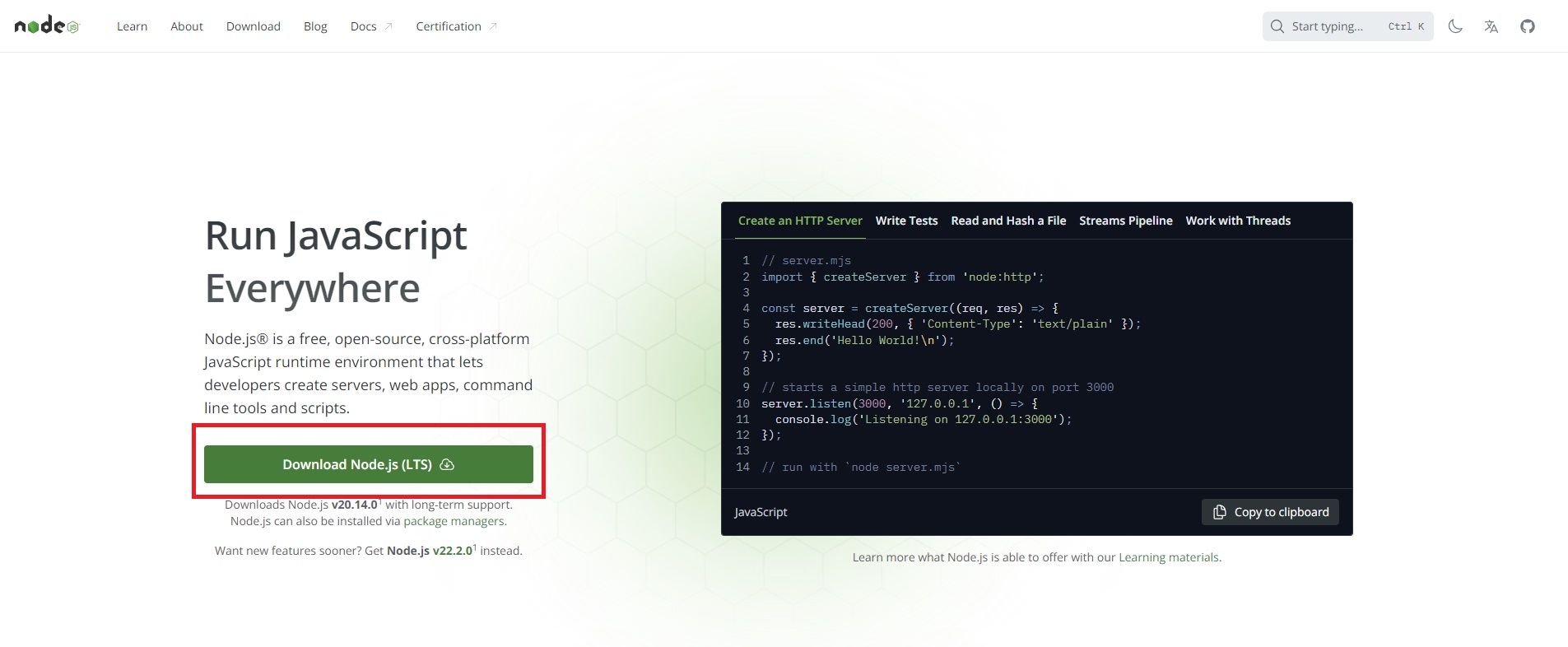
- Follow the installation instructions provided.
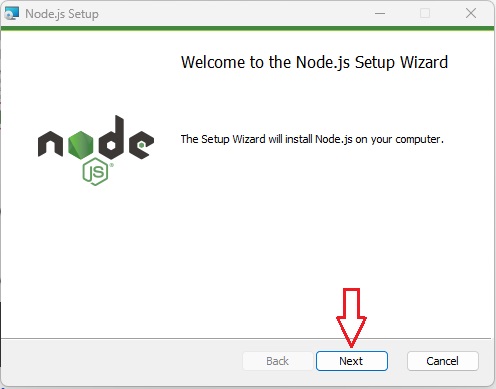
- Verify the installation by checking the version:
| `node -v` |
Conclusion
Moving to Node.js v22 is a worthy upgrade as it provides numerous features that upgrade the performance, security, and general operation of applications for developers.
By using the latest version of Node.js, developers can optimize using features of modern JavaScript, implement secure communication protocols, and avail several advanced diagnostic tools while building their applications that continue to be optimized, secure, and sustainable. For more detailed information, visit the Node.js v22 release announcement and the Node.js v22.2.0 release notes.





